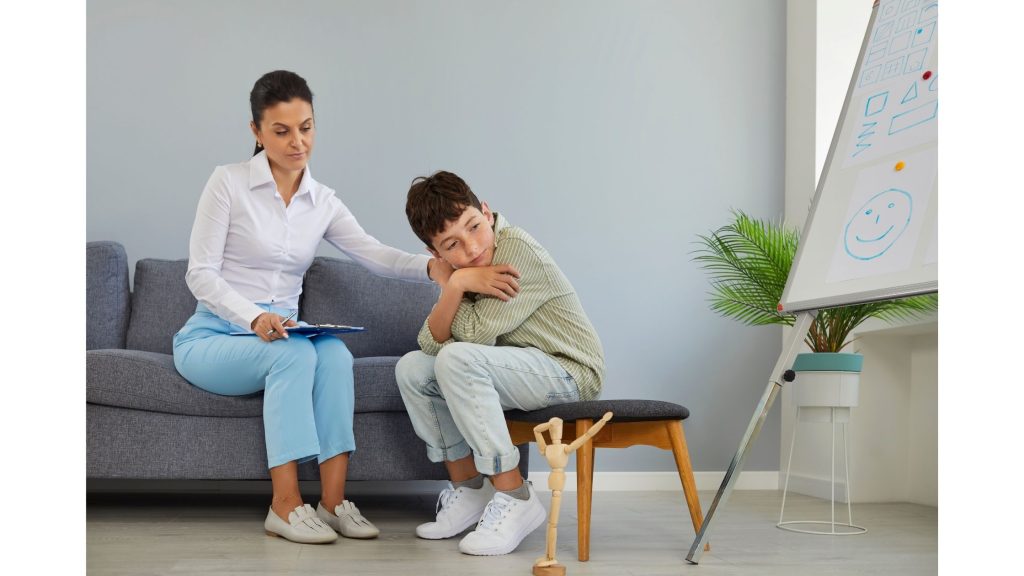in children Trauma Post-Stress Disorder: Childhood is one of the most fundamental stages of an individual's life, and this stage includes many positive experiences as well as potential traumatic events. Unfortunately, children can also be at risk of Post-Traumatic Stress Disorder (PTSD) after traumatic events they experience. This article will focus on the meaning, symptoms and treatment methods of PTSD in children. Additionally, this issue will be addressed in order to understand the effects of this disorder on children's quality of life and to recommend appropriate support mechanisms.
What children experience traumatic Events can have profound and long-term effects on their mental and emotional development. In this context, understanding and effectively intervening in PTSD in children is of critical importance to improve the health of both the individual and the society. This article aims to provide up-to-date information on the symptoms, causes and treatment methods of PTSD in children.

Post-Traumatic Stress Disorder and Treatment in Children
Childhood is considered a critical phase in which the individual's personality development forms the basis. However, children can also experience various traumatic events, which can increase the risk of post-traumatic stress disorder (PTSD) in children. This article will focus on the symptoms, causes, and effects of PTSD in children.
What is PTSD in Children? Post-traumatic stress disorder is a psychiatric disorder that occurs after a person experiences one or more traumatic events. PTSD in children can often occur as a result of traumatic events they have experienced directly or indirectly, such as serious accidents, abuse, natural disasters or domestic violence.
Symptoms: Symptoms of PTSD in children can range from a wide range. These symptoms may include nightmares, anxiety, constant alertness, concentration problems, and recurring thoughts about the traumatic event. However, symptoms of PTSD in children may differ from those in adults and therefore may require careful evaluation.
Reasons: The causes of PTSD in children can be complex. Often, children may develop PTSD because they have not developed skills to cope with the effects of the traumatic events they experience. Additionally, children's exposure to age-inappropriate information may also contribute to the development of this disorder.
Treatment Methods: Treatment of PTSD in children may vary depending on individual characteristics and the situation. However, approaches such as cognitive-behavioral therapy (CBT) and play therapy are often used. Additionally, family therapy can also strengthen children's support systems and contribute to recovery.

Treatment of Post-Traumatic Stress Disorder (PTSD) in Children: Individual and Effective Approaches
Post-traumatic stress disorder (PTSD) in children is a psychiatric disorder seen in children who have difficulty coping with the effects of traumatic events. These children struggle with symptoms such as anxiety, nightmares, and concentration problems triggered by the events they experience. However, with appropriate treatment methods, it is possible to help children manage these symptoms and step into a healthy development process.
1. Cognitive-Behavioral Therapy (CBT): Cognitive-behavioral therapy is an effective method frequently used in the treatment of PTSD in children. This therapy teaches children how to understand traumatic events, helps them recognize negative thought patterns, and helps them change these thoughts. It also helps children cope with post-traumatic stress more effectively by providing them with coping skills.
2. Play Therapy: Emotional expression in children often occurs through play. Play therapy provides children with a platform to express what they feel and think. Through games, children can process traumatic experiences and heal emotionally. Play therapy can also build trust by strengthening the child-therapist relationship.
3. Family Therapy: Family therapy plays an important role in treating PTSD in children. Family therapy strengthens communication between family members, creates a support system and involves the child in the healing process. It also guides parents to support and understand their children.
4. Emotional Regulation Techniques: Emotional regulation techniques teach children how to cope during emotionally challenging moments. These techniques may include breathing exercises, mindfulness practices and emotional expression strategies.
5. Psychopharmacological Treatment: In some cases, psychopharmacological medications can be used to treat PTSD in children. However, this is usually considered when other treatment methods have failed or in certain situations. Medication should be managed by a child psychiatrist.
Traumatic events experienced during childhood can deeply affect an individual's future life. Post-Traumatic Stress Disorder (PTSD) is an important psychiatric problem that can occur in children following such events. However, effective treatments are available to manage and help children with this challenging condition.
In our article, we focused on the symptoms and causes of PTSD in children. We also examined how cognitive-behavioral therapy (CBT), play therapy, and family therapy may be effective in treating PTSD in children. These treatment methods can help children develop their skills in coping with traumatic experiences and support them in taking steps towards a healthy development process.
Understanding and treating PTSD in children is an important step towards strengthening the overall mental health of the population. Parents, educators, and health professionals should be trained to recognize symptoms of PTSD in children and be sensitive in providing support to children. These efforts are important steps towards building a healthier society in the future.

















